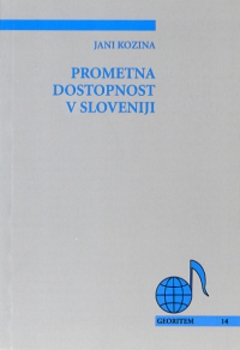Prometna dostopnost v Sloveniji
Transport accessibility to jobs, education, supply, and public services, which are usually most concentrated in large regional centers, has an impact on lower economic costs (savings in time and energy consumption), greater social justice (better and more equal access to jobs and education), and lower pressures on the environment (reduction of harmful emissions and noise, and increased road safety). Transport accessibility as a spatial component affects the widest range of development opportunities in an area, and it should therefore represent a significant component of regional and spatial planning. This book presents the main features of transport accessibility to regional centers as the central pillars of regional and spatial structure in Slovenia. Attention is focused on addressing the situation in accessibility planning itself, followed by modeling geographic reality using spatial analyses in a geographic information system. Emphasis is placed on the state of spatial equilibrium of regional centers. This study also examines the spatial differences in their accessibility, the main reasons for these differences, and the correspondence between regional borders in various regionalization proposals for Slovenia and their centers’ borders of accessibility.
Downloads

Series
License

This work is licensed under a Creative Commons Attribution-NonCommercial-NoDerivatives 4.0 International License.
